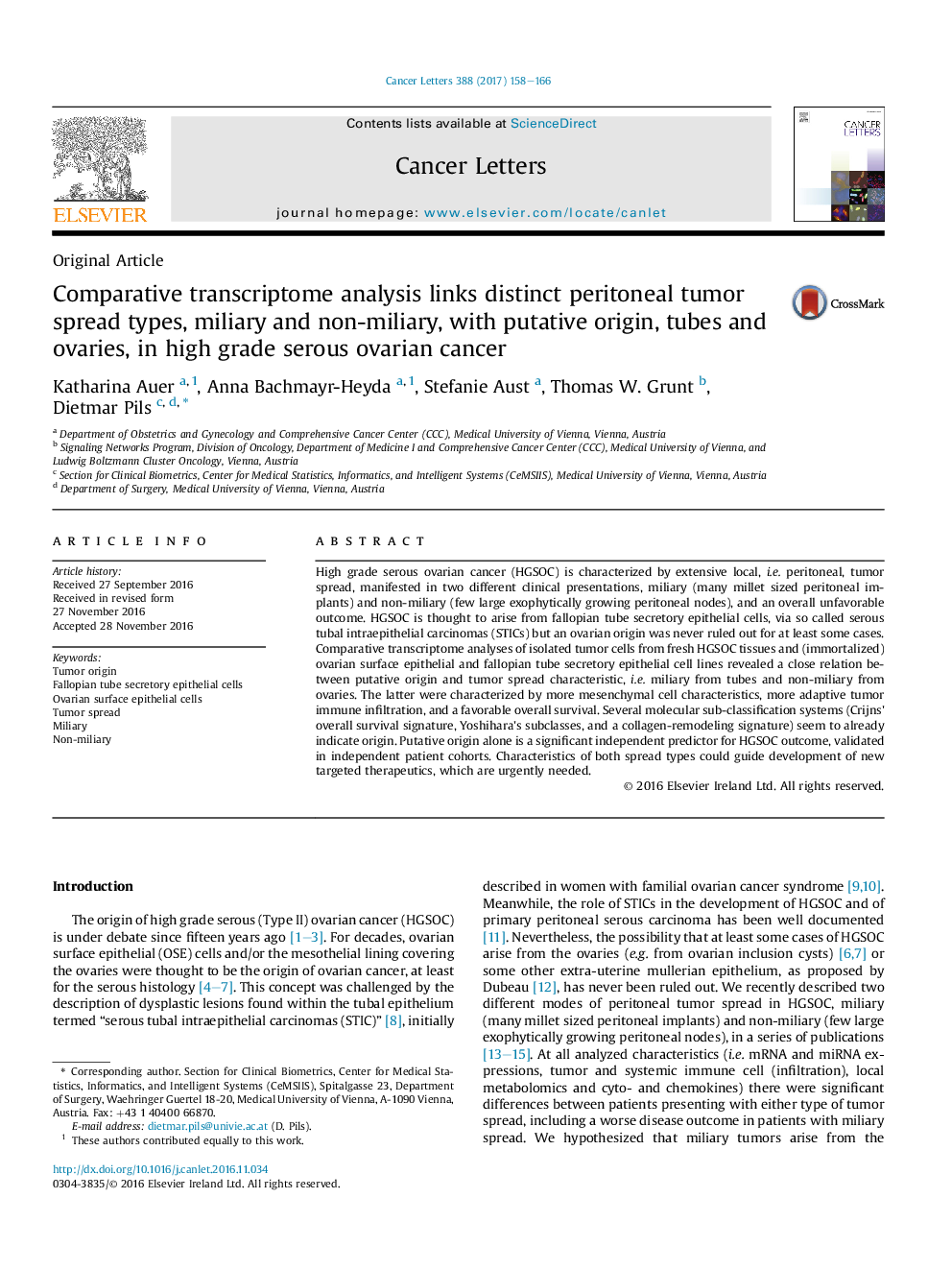| کد مقاله | کد نشریه | سال انتشار | مقاله انگلیسی | نسخه تمام متن |
|---|---|---|---|---|
| 5525683 | 1546681 | 2017 | 9 صفحه PDF | دانلود رایگان |

- Evidence for ovarian surface epithelia as origin for some high grade serous ovarian cancers.
- Peritoneal tumor spread characteristics (miliary-non-miliary) correlates with tissue of origin (fallopian tube-ovary).
- Putative ovarian origin is an independent predictor of favorable overall survival.
- A FIGO-stage based sub-classification system is highly correlated with tissue origin.
- Subclass 2 (high FIGO), tubal origin, miliary tumor spread, and poor prognosis seem to be associated.
High grade serous ovarian cancer (HGSOC) is characterized by extensive local, i.e. peritoneal, tumor spread, manifested in two different clinical presentations, miliary (many millet sized peritoneal implants) and non-miliary (few large exophytically growing peritoneal nodes), and an overall unfavorable outcome. HGSOC is thought to arise from fallopian tube secretory epithelial cells, via so called serous tubal intraepithelial carcinomas (STICs) but an ovarian origin was never ruled out for at least some cases. Comparative transcriptome analyses of isolated tumor cells from fresh HGSOC tissues and (immortalized) ovarian surface epithelial and fallopian tube secretory epithelial cell lines revealed a close relation between putative origin and tumor spread characteristic, i.e. miliary from tubes and non-miliary from ovaries. The latter were characterized by more mesenchymal cell characteristics, more adaptive tumor immune infiltration, and a favorable overall survival. Several molecular sub-classification systems (Crijns' overall survival signature, Yoshihara's subclasses, and a collagen-remodeling signature) seem to already indicate origin. Putative origin alone is a significant independent predictor for HGSOC outcome, validated in independent patient cohorts. Characteristics of both spread types could guide development of new targeted therapeutics, which are urgently needed.
Journal: Cancer Letters - Volume 388, 1 March 2017, Pages 158-166